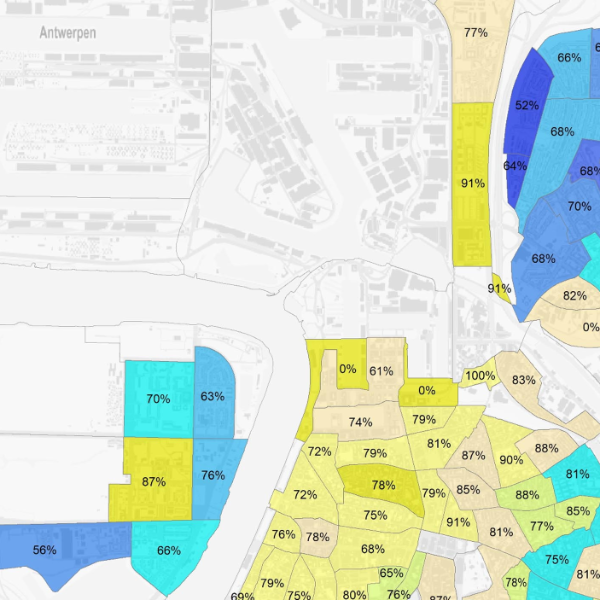City of Antwerp’s energy and heating policy

City of Antwerp’s energy and heating policy
The energy transition is about making choices. Which decisions can we make today for a transition that will take place over several decades? Which sustainable technologies and concepts are available? Where can these concepts be introduced in the most cost-effective way? How can lock-ins be avoided? How do we involve stakeholders in the decision-making process and advise them about possible consequences?
Goal: Carbon-neutral Antwerp by 2050
The above questions were put to Witteveen+Bos by the City of Antwerp in connection with its strategic vision on energy and heating policy. After all, Antwerp aims to be carbon-neutral by 2050. A team of energy experts at Witteveen+Bos, some of them specialising in the energy transition, took this task onboard and came up with concrete advice.
This advice enables the city to make well-reasoned policy choices, which has resulted in heating zone maps of the City of Antwerp, the final component of its Strategic Energy Vision (SeviA).
Heating zone maps based on techno-economic analyses
Witteveen+Bos investigated the possible transition to three sustainable heating concepts for the City of Antwerp region:
- Heat networks;
- All-electric (heat pumps);
- Renewable gas.
The cost of transition to these concepts was also calculated in terms of individual neighbourhoods. In doing this, we considered a range of costs:
- The cost of generating the heat;
- The distribution costs of the energy carrier (heat, gas, electricity);
- Conversion and renovation costs specific to the type of building.
Based on the TCO (total cost of ownership) for a period of 30 years, we compared the various heating concepts and presented the results on a map.
Carefully considered advice as basis for city heating policy
To test the robustness of the results and investigate uncertainties, we carried out a sensitivity analysis. As part of this, we looked at several critical parameters, including the amount of renovation required, electricity rates and heating costs.
At the same time, we examined socio-economic aspects. These included housing type, proportion of subsidised housing, and average income per neighbourhood in Antwerp. The purpose of this is to support policy decisions and implementation in terms of these aspects too.
Heating zone maps help the City of Antwerp determine which heating concept is most appropriate and can be introduced with minimal societal costs in each neighbourhood. The heating zone maps and heating plan were approved by the council authorities at the start of 2020. Currently, the City of Antwerp is preparing to introduce the first heat networks.
More Information?

.jpg)